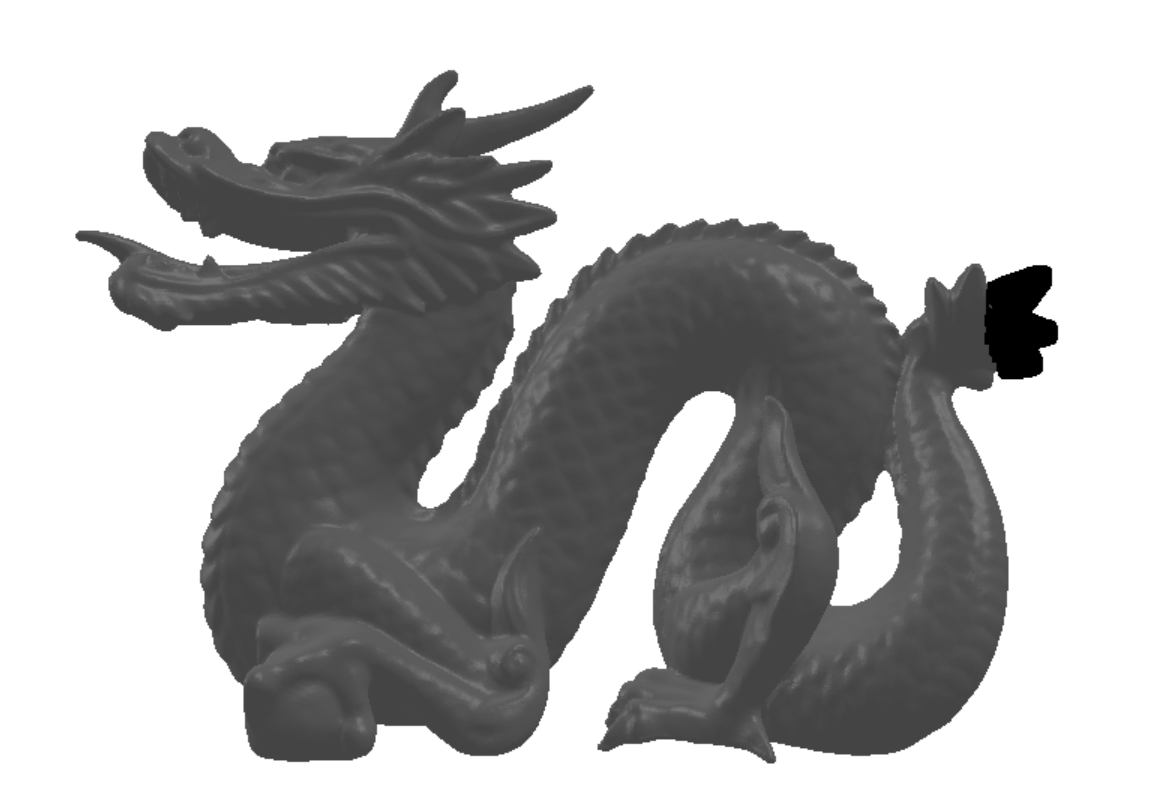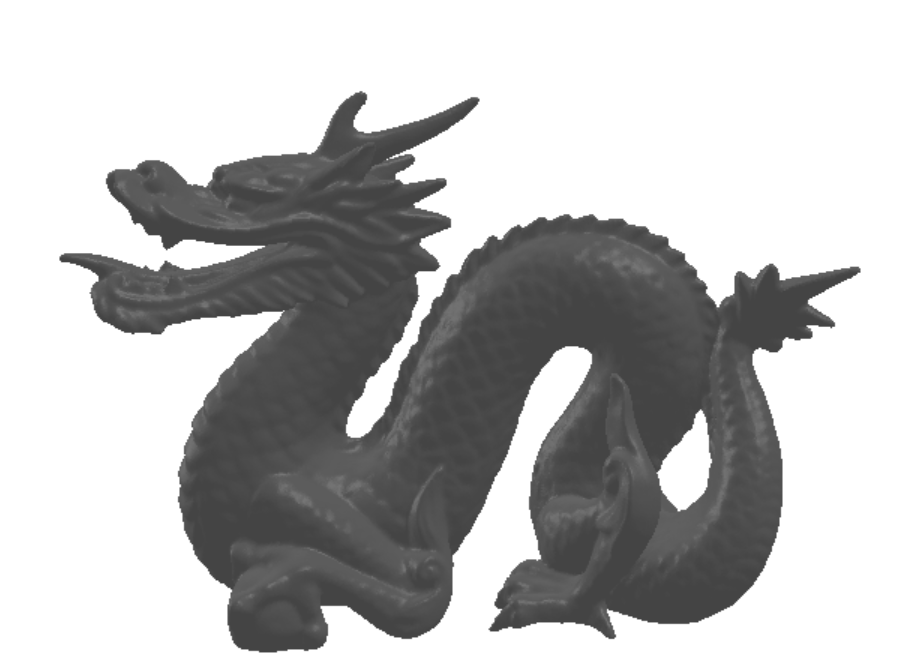CG——Laplacian Surface Editing
https://people.eecs.berkeley.edu/~jrs/meshpapers/Sorkine.pdf
原理:这篇博客写的很好,通俗易懂:https://blog.csdn.net/qq_31804159/article/details/103409465
代码:

import numpy as np import networkx as nx import trimesh import scipy.sparse #function collection def mesh_to_graph(mesh): edges = mesh.edges_unique verts = mesh.vertices g = nx.Graph() for i, pos in enumerate(verts): g.add_node(i, pos=pos) for edge in edges: g.add_edge(*edge) return g def get_boundary(g, ctrl_points): boundary = [] for i in range(len(ctrl_points)): p1 = ctrl_points[i] p2 = ctrl_points[(i+1)%len(ctrl_points)] path = nx.shortest_path(g, p1, p2) boundary += path[0:-1] return boundary def rw_laplacian_matrix(g): lap = nx.laplacian_matrix(g) adj = nx.adjacency_matrix(g) inv_deg = scipy.sparse.diags(1/adj.dot(np.ones([adj.shape[0]]))) return inv_deg.dot(lap) def get_editable_vertices(g, boundary, manip_handle): g_part = g.copy() g_part.remove_nodes_from(boundary) return list(nx.node_connected_component(g_part, manip_handle)) def get_mesh_scene(mesh, boundary=None, editable_vertices=None): scene = [mesh] # if boundary: # scene.append(trimesh.load_path(mesh.vertices[boundary+[boundary[0]]])) if editable_vertices: scene.append(trimesh.points.PointCloud(mesh.vertices[editable_vertices + boundary])) return trimesh.Scene(scene) #load mesh mesh = trimesh.load('bunny.ply', process=False) g = mesh_to_graph(mesh) handles = { 24092 : [-0.01134 , 0.151374 , -0.0242688] } boundary_ctrl_points = [15617, 24120, 30216, 11236, 6973] boundary = get_boundary(g, boundary_ctrl_points) editable_verts = get_editable_vertices(g, boundary, list(handles.keys())[0]) trimesh.points.PointCloud(mesh.vertices[editable_verts + boundary]) get_mesh_scene(mesh, boundary, editable_verts).show(viewer='gl',smooth=False) # laplacian subgraph = g.subgraph(boundary + editable_verts) old_id = list(subgraph) grp_idx = {} for node in subgraph.nodes: grp_idx[node] = len(grp_idx) g2 = list(subgraph.nodes) L = rw_laplacian_matrix(subgraph).todense() #最初的L V = np.matrix([subgraph.nodes[i]['pos'] for i in subgraph.nodes]) Delta = L.dot(V) boundary_idx = [grp_idx[i] for i in boundary_ctrl_points] for x in handles.keys(): t = grp_idx[int(x)] boundary_idx.append(t) N = L.shape[0] H = np.zeros((len(boundary_idx), N)) h = [] for i in range(len(boundary_idx)): idx = boundary_idx[i] H[i][idx] = 1 for x in boundary_ctrl_points: h.append( np.array(subgraph.nodes[x]['pos']) ) for x in handles.values(): h.append( x ) h = np.matrix(h) newL = np.vstack((L, H)) newDelta = np.vstack((Delta, h)) n, m = newL.shape[1], newL.shape[0] transL = np.zeros((m*3, n*3)) newL = newL.tolist() for i in range(m): for j in range(n): transL[i*3][j*3] = transL[i*3+1][j*3+1] = transL[i*3+2][j*3+2] = newL[i][j] transL = scipy.sparse.coo_matrix(transL) newDelta = newDelta.tolist() transDelta = [] for item in newDelta: for x in item: transDelta.append(x) transDelta=np.array(transDelta) X = scipy.sparse.linalg.lsqr(transL, transDelta)[0] # display newmesh = mesh.copy() for i in range(n): newmesh.vertices[old_id[i]] = [X[i*3],X[i*3+1],X[i*3+2]] scene2 = [newmesh] trimesh.Scene(scene2).show(viewer='gl',smooth=False)
成果:







 浙公网安备 33010602011771号
浙公网安备 33010602011771号